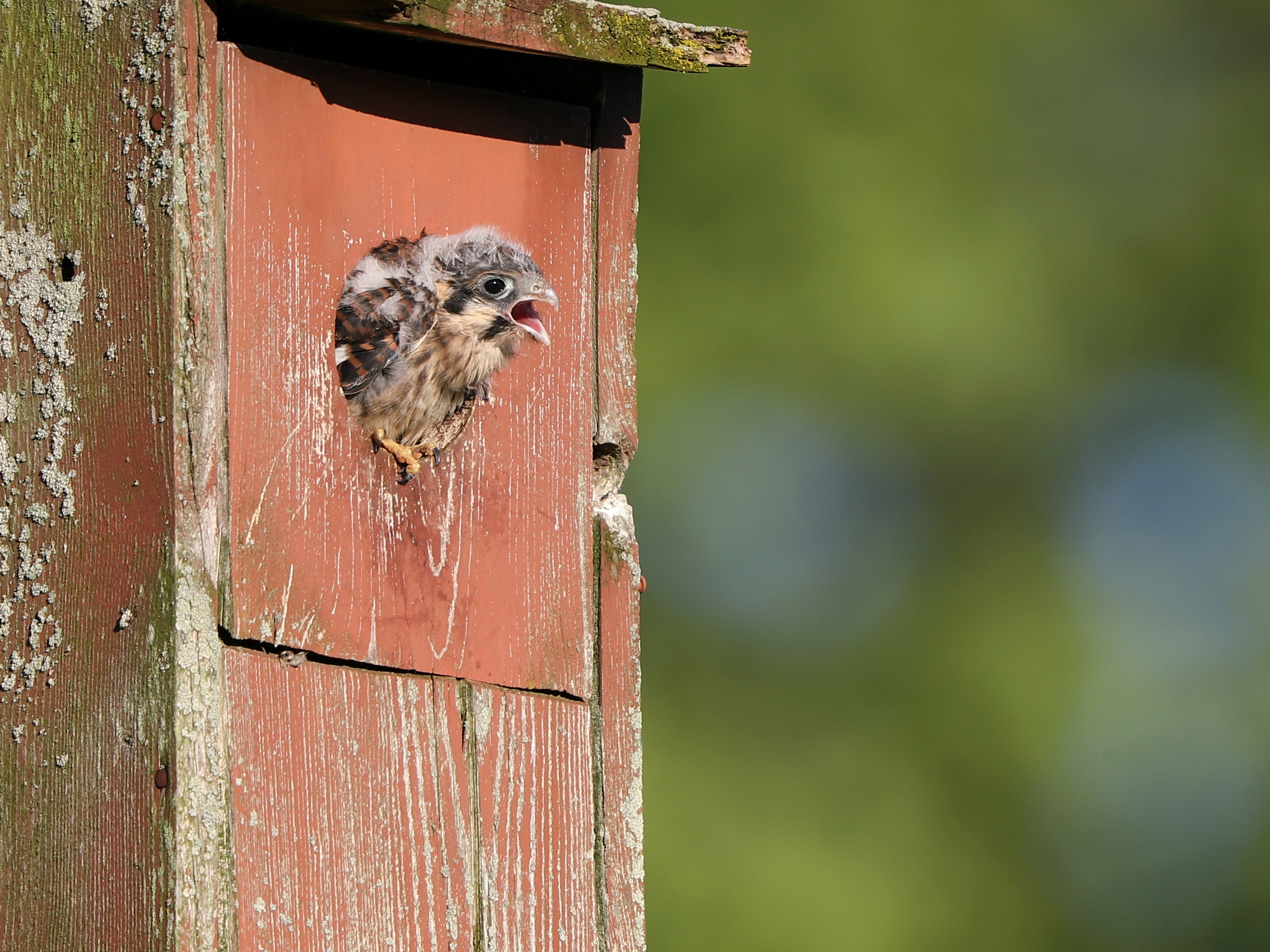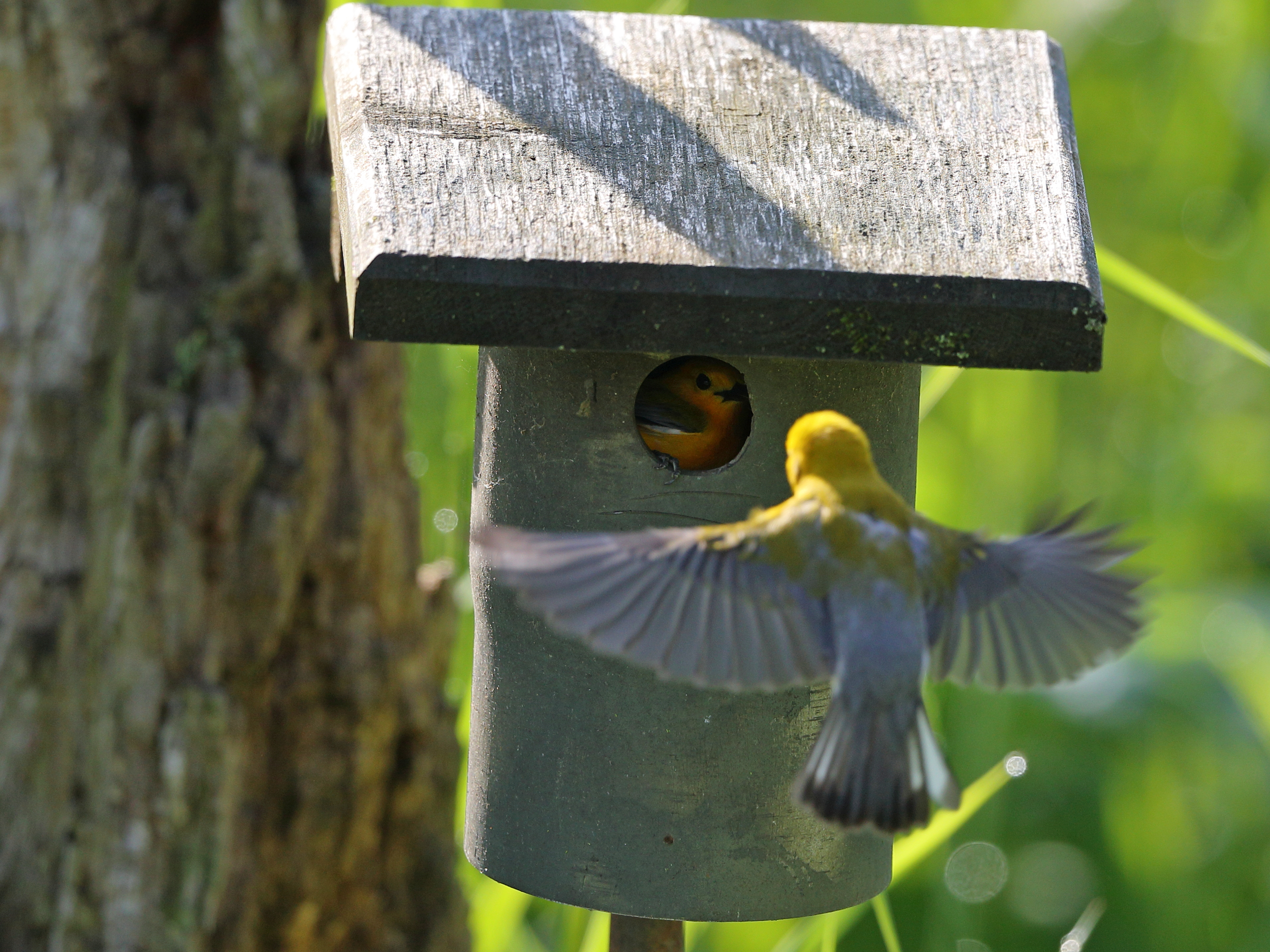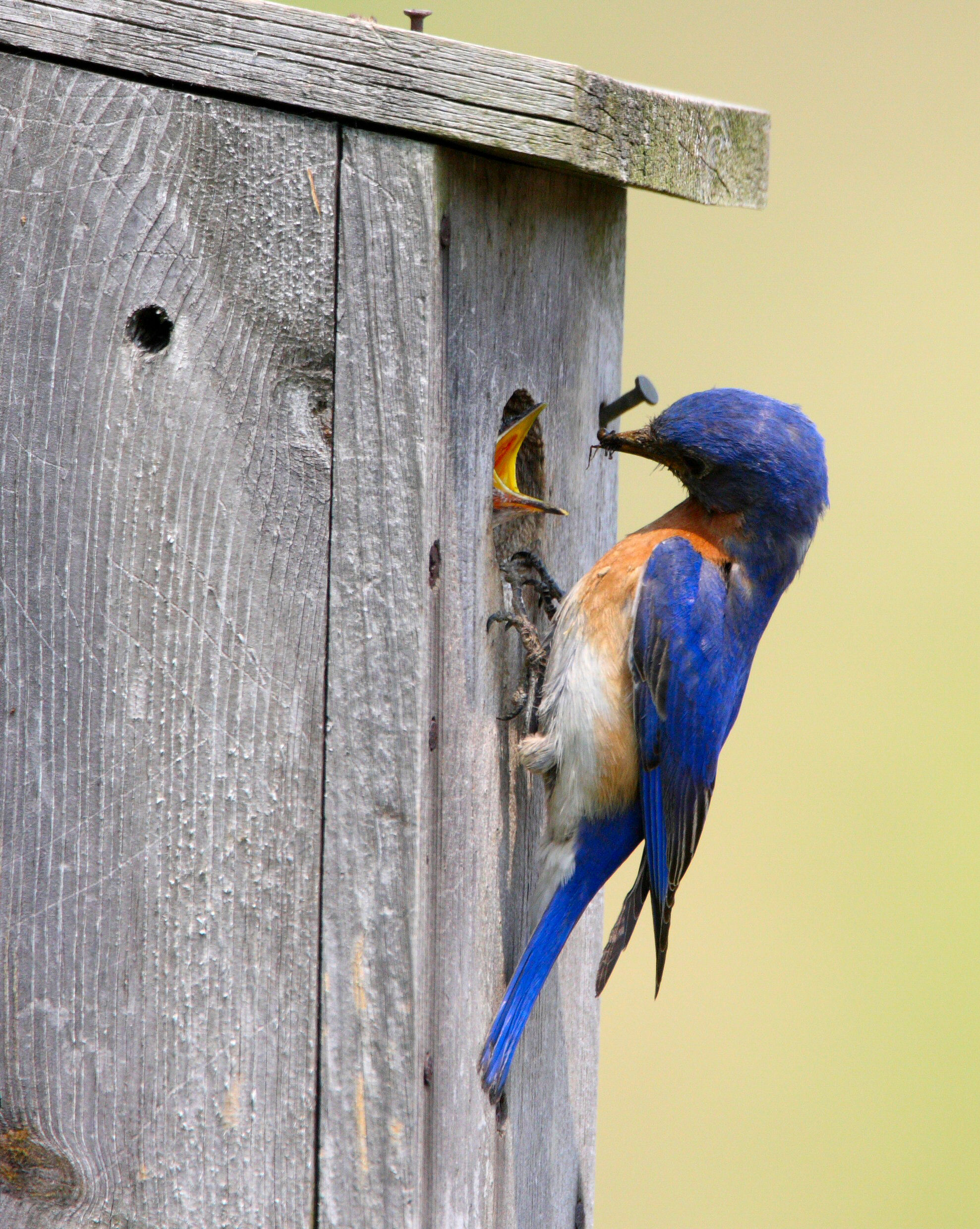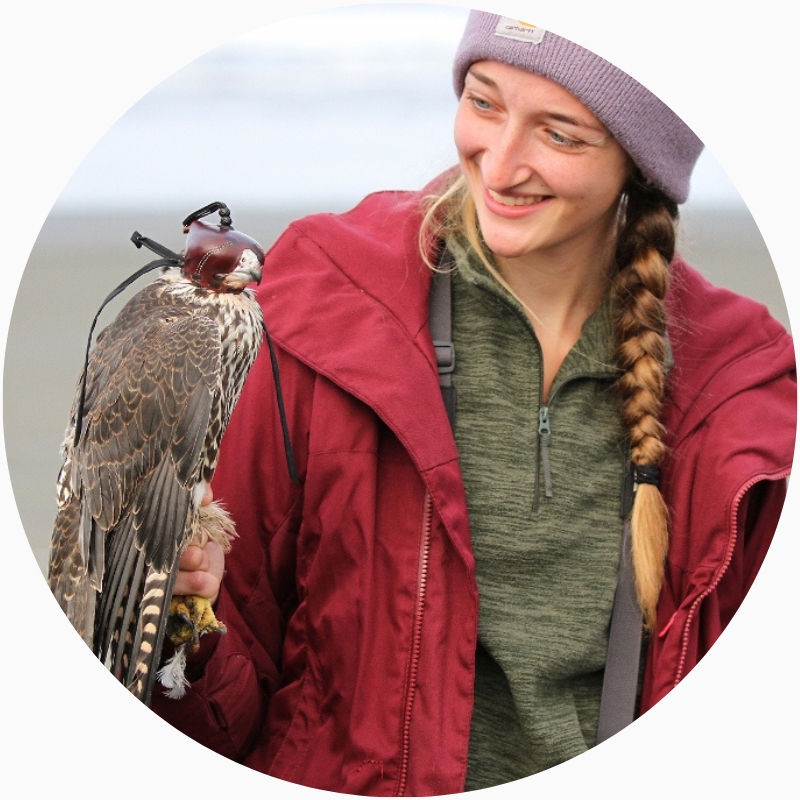Woodcrafting for Wildlife: Nest Boxes

Each spring, 189 species of birds will set up their nests, find their mates, and prepare for the long breeding season ahead, right here in Pennsylvania!
For most bird species, nesting occurs in the late spring and early summer months when food is most abundant. While these birds benefit from the abundant food during this time of year, nesting at the same time can cause some challenges. Birds will often face stiff competition for ideal nesting territories, with some birds having no nesting opportunity at all. For cavity nesters (birds that nest in holes in trees, fence posts, and other wooden structures), this is especially true. Since there are fewer and fewer dead trees and fence posts on the landscape, these birds are having a tough time finding places to nest. That’s where we come in!
Nest boxes provide a great substitute for natural cavities and can offer additional nesting opportunities for cavity-nesting birds. Nest boxes are made of wood and come in all shapes and sizes to accommodate different bird species. From the tiny eastern bluebird to the giant barn owl, there’s a nest box for every bird! No matter what species you’re trying to attract, here are a few things to keep in mind.
Preparing for Nesting Season
If you’re interested in placing a new nest box, now is the time! Set up new nest boxes in late winter or very early spring for the best chance of them being occupied. Since most of our nesting bird species are migratory, it’s best to have your nest box up and ready to go by the time they return from their spring migration.
The same goes nest boxes that are already in place — now is the time to clean out your nest boxes and make sure they’re ready for their new occupants! Take a couple minutes to remove everything from your nest boxes for the best chance of attracting a new breeding pair of birds.
Where to
Put a
Nest-Box
When placing a new nest box, put it in a good spot that matches the species you’re trying to attract.

For a bluebird box, check out open habitats such as meadows, yards, and pastures. Once you have a general location, find a fence post, barn wall, or tree within that habitat you can screw the box to. When you’re ready to install the box, place it 4-15 feet above the ground and secure it with multiple screws so it doesn’t shift or move when the birds are inside.
If you have a kestrel box, look for similar habitat types with the addition of agricultural fields. Kestrels do well in agricultural areas, and they help keep mouse, songbird, and insect populations down, which provides pest control benefits for the farmer as well. Once you’ve found an agricultural field, meadow, or pasture, try to locate a utility pole, barn wall, post, or tree far from human disturbance and loud noises. Then mount the box 10-30 feet above the ground. Kestrels are a more sensitive to humans than bluebirds, so it’s best to give them a more private location.
When placing a barn owl box, keep your eyes out for open habitat near a barn or other old structure you wouldn’t mind mounting a nest box on. Just like kestrels, barn owls love agricultural settings and eat lots of mice that could otherwise damage a farmer’s crops. Once you’ve found a building in an agricultural area, mount the box 12-20 feet above the ground either on the outside of the barn with the entrance hole facing the field or inside of the barn wall and cut a hole in the wall so the owl can enter the box from outside.
Breeding Season is Here! Now What?
Leave the nest alone as much as possible once nesting season arrives. It can be tempting to check your nest box often and see how everything is going, but the birds need privacy at this important stage of the nesting season.

You should check your nest once in March or April to see if you have any nesting activity. Since this is the prime time for egg laying, you might see a nest, eggs, or even young nestlings during this first check! If you find any of these exciting features, feel free to check back in 2 weeks to see how the process is going. Don’t check too often, though, or birds could abandon the nest.
If you don’t have a nest, eggs, or nestlings during this first check, don’t worry! Your nest box may still attract a late-nesting pair, so check back in a month to see if anything new has shown up. No matter what you see in your nest box, it’s great to write down your observations so you can keep track of the activity and make sure you aren’t checking the nest more often than necessary.
Nest
Box Benefits
Although nest boxes are most helpful to the birds that use them, we also benefit from them! Having an active nest box around ensures you’ll have consistent bird-watching opportunities as the breeding birds, and eventually the young, fly in and out of the nest often throughout the summer months.
Monitoring the nest boxes is fun too. It’s exciting to check up on the box periodically throughout the summer to see the eggs and nestlings inside and know these birds will eventually become productive members of their species!
In terms of research, nest boxes are invaluable tools for monitoring these populations and ensuring birds are producing enough young to keep the population healthy. If we find reproduction is failing in these nest boxes, we can infer the entire population may be facing challenges and investigate further. Nest boxes provide this opportunity with easy access to eggs and nestlings that can then be measured, sampled, and checked up on.
That’s exactly what the Pennsylvania Game Commission is doing now with over 300 American kestrel nest boxes! American kestrels have been declining across the country in terms of migration counts, population censuses, and nest box occupancy. So the Game Commission has sprung into action by collaborating with other research organizations to investigate. The Game Commission has been looking into nestling development, contaminant load, habitat quality, and survival of fledglings, all thanks to nest boxes.
 Mercy Melo
Mercy Melo
Mercy Melo is the Environmental Education Specialist for the Game Commission’s Northcentral Region. Mercy found her passion for conservation while conducting research on raptors, which she still enjoys volunteering with today!